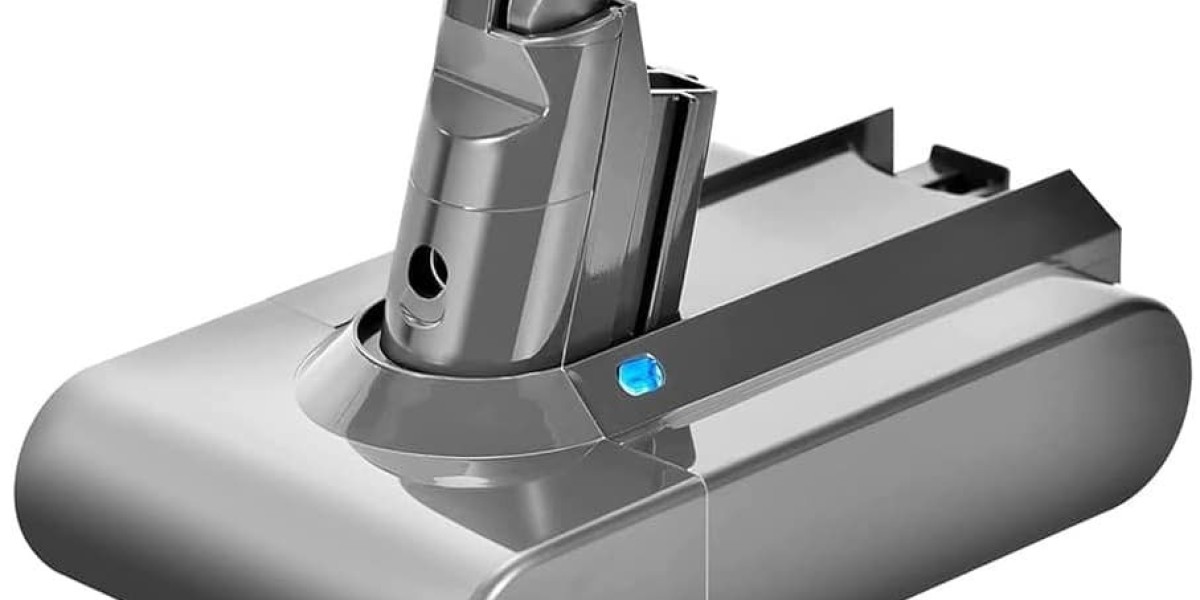Cordless vacuums have become essential in many homes, and Dyson vacuums are among the most popular. They are lightweight, flexible, and reliable, but like any battery-powered tool, performance depends heavily on the condition of the battery. Over time, Dyson batteries lose capacity and efficiency. Knowing when your vacuum requires a Dyson battery replacement helps you avoid frustration and keep your vacuum working as it should.
This guide explains the most common signs that your Dyson battery is failing. It also covers basic technical details, replacement options, and how to extend the life of your battery.
Why Dyson Batteries Wear Out
Dyson cordless vacuums rely on rechargeable lithium-ion batteries. These batteries deliver high power output but degrade after repeated charging and discharging cycles. A typical battery may last about 3 to 5 years, depending on usage patterns.
Heat, charging habits, and frequent use on maximum suction all affect the life of a battery. When the cells degrade, the vacuum cannot hold a charge as long or deliver consistent performance. Eventually, replacement becomes unavoidable.
Key Signs Your Dyson Battery Needs Replacement
1. Shortened Run Time
One of the clearest warning signs is a reduced run time. A fully charged Dyson should last anywhere from 20 to 60 minutes, depending on the model and suction mode. If your vacuum runs out of power after only a few minutes, the battery is likely failing.
For example, a Dyson V6 battery in good condition should provide about 20 minutes of cleaning in standard mode. If you only get 5 minutes, it indicates cell degradation.
2. Vacuum Shuts Off Suddenly
Another common symptom is sudden power loss. The vacuum might run for a minute, then shut down without warning, even when the charge indicator shows power remaining. This often happens because the internal cells cannot supply consistent voltage under load.
3. Battery Warning Light
Most Dyson vacuums have LED indicators that display charging status and error warnings. A flashing red light usually signals a problem with the battery. If you see repeated red blinks while charging or running, the unit is alerting you that the battery needs attention.
4. Fails to Charge Fully
A failing battery may not charge to full capacity. You might notice that it takes longer to charge or never reaches 100 percent. This often points to degraded cells or internal resistance that prevents the pack from storing energy correctly.
5. Excessive Heat During Use
Lithium-ion cells naturally generate heat during heavy use. But if your vacuum or charger becomes unusually hot, the battery may be struggling. Overheating is not only a sign of wear but also a safety risk, so a Dyson battery replacement is recommended.
How to Confirm the Battery Is the Problem
Sometimes issues with a Dyson vacuum can be caused by blockages or motor problems. Before assuming the battery is at fault, check these:
Clean the filters and ensure airflow is not restricted.
Empty the dust bin and inspect for blockages in the wand or brush head.
Test with different power modes. If the vacuum still shuts off or runs for a short time even with clean filters, the battery is the likely culprit.
Choosing the Right Replacement Battery
When replacement is necessary, you have two main options:
Original Dyson Batteries
Designed specifically for each model.
Offer safe and reliable performance.
Usually more expensive.
Third-Party Replacement Batteries
Cost less than original parts.
Quality varies widely, so research before buying.
Some provide higher capacity for longer run times.
Always match the replacement to your vacuum model. A battery designed for the V6 series will not fit a V7 or V8. If you use a Dyson V6 battery, look for genuine or well-reviewed replacements compatible with that model.
Extending the Life of Dyson Batteries
Even after replacement, you want your new battery to last as long as possible. Good care practices include:
Avoid complete discharges: Recharge when power runs low, but don’t wait until it is totally drained.
Keep it cool: Store and charge in a room-temperature environment. Avoid direct sunlight or freezing temperatures.
Use correct chargers: Always charge with the manufacturer’s recommended charger. Off-brand chargers may not regulate voltage properly.
Clean regularly: Keeping filters and airflow paths clear reduces strain on the motor and battery.
Safety Considerations
Lithium-ion batteries store high energy. Using damaged or poor-quality batteries increases risk of overheating or even fire. Always dispose of old batteries responsibly at a recycling center. Do not throw them in household trash.
When a Replacement Makes More Sense
Some users hesitate to replace a battery, wondering if they should instead buy a new vacuum. A replacement battery is usually much cheaper than a new Dyson vacuum. If the rest of the unit is working well, swapping in a new battery restores performance.
For older models, availability of compatible batteries may affect the decision. But in most cases, replacing the battery is a practical and cost-effective solution.
Technical Perspective
A typical Dyson battery pack contains multiple lithium-ion cells arranged in series to deliver required voltage. For example, a Dyson V6 battery usually uses six cells at 3.6V each, giving a nominal pack voltage of 21.6V. Capacity varies between 2.1 Ah and 3.0 Ah depending on the version.
As these cells age, internal resistance increases. This reduces their ability to deliver high current, which explains the sudden shutdowns and shorter run times. The pack’s onboard electronics monitor voltage and temperature, and once thresholds are exceeded, the vacuum cuts power to prevent damage.
This technical structure means replacement is not about fixing one cell, but the entire pack. That’s why buying a proper replacement is necessary instead of attempting to repair individual cells.
Final Thoughts
Your Dyson vacuum depends on a healthy battery for strong suction and consistent cleaning. When you notice shorter run times, sudden shutoffs, flashing warning lights, or overheating, these are clear signs that your battery is failing.
Understanding these symptoms helps you decide when to get a Dyson battery replacement. If you own older models like the V6, paying attention to battery health keeps your vacuum in service for years. With proper maintenance and timely replacement, Dyson batteries continue to deliver the performance you expect from your vacuum.







